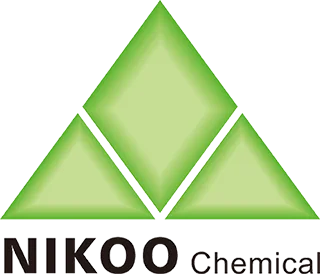How to Read the Ingredient List on Skincare Products?
When selecting skincare products, understanding their ingredient lists is crucial.
The ingredient list of skincare products lists all active and inactive ingredients, which collectively determine the product's efficacy and safety.
The following is a detailed analysis of how to read skincare product ingredient lists for reference.
1. Basic Structure of the Ingredient List
Arranged by content: Ingredient lists are typically arranged in descending order of content, with the highest-content ingredient listed first and the lowest-content ingredient listed last.
International naming system: Ingredient lists typically use the International Nomenclature of Cosmetic Ingredients (INCI), an internationally recognized standard naming system. Ingredient names may be displayed in Latin or English.
Percentage labeling:
In some countries, the specific content of certain ingredients (expressed as a percentage) may be labeled in the ingredient list, particularly for active ingredients.
2. Main ingredient types and their functions
Active ingredients:
Function: Directly provide skincare benefits, such as moisturizing, antioxidant, whitening, and anti-aging effects.
Examples: Vitamin C, hyaluronic acid, niacinamide, retinol, AHA/BHA (alpha hydroxy acids/beta hydroxy acids).
Base ingredients:
Function: Form the main structure of the product, providing texture, stability, and application feel.
Examples: Water, glycerin, mineral oil, plant oils.
Moisturizers:
Function: Maintain skin moisture and prevent dryness.
Examples: Hyaluronic acid, glycerin, urea, aloe vera extract.
Function: Help mix oil and water to form a uniform lotion or cream.
Examples: Lecithin, stearic acid, cetyl alcohol
Preservatives:
Function: Prevent product degradation and extend shelf life
Examples: Phenoxyethanol, parabens (PA+++), potassium sorbate
Fragrances and colorants:
Function: Provide scent and color to the product, enhancing the user experience
Examples: Fragrance, CI 77491 (iron oxide red)
Other functional additives:
Function: Provide specific functions such as oil control, anti-inflammatory, and antibacterial properties
Examples: Titanium dioxide (sunscreen), zinc oxide (anti-inflammatory), glyceryl caprylate/caprate (oil control)
III. How to identify and understand ingredients
Common active ingredients:
Vitamin C (Ascorbic Acid): Antioxidant, whitening, anti-aging
Niacinamide: Brightens skin tone, anti-inflammatory, oil control
Hyaluronic Acid: Strong moisturizing, improves skin elasticity
Retinol: Anti-aging, promotes cell renewal
AHA/BHA (Alpha/Beta Hydroxy Acids): Exfoliates, improves skin texture
Identify potential allergens and irritants:
Alcohol (Alcohol Denat.): May cause skin dryness and irritation; sensitive skin should use with caution
Fragrance (Fragrance/Parfum): May trigger allergic reactions; sensitive skin is advised to choose fragrance-free products
Preservatives: Such as parabens, which, despite ongoing controversy, are present in safe amounts in most products
Natural vs. synthetic ingredients:
Natural ingredients: Such as aloe vera extract (Aloe Barbadensis Leaf Extract) and tea tree oil (Melaleuca Alternifolia Leaf Oil)
Synthetic ingredients: such as dimethicone, used to improve product texture and provide a smooth feel
4. Tips for reading ingredient lists
The first five ingredients: The first five ingredients in the ingredient list typically account for the majority of the product. Focus on the efficacy and safety of these ingredients
Identify keywords: Understand common keywords for skincare ingredients, such as “acid” typically indicating exfoliating ingredients, and “alcohol” possibly indicating alcohol or moisturizers
Search for detailed information:
For unfamiliar ingredients, you can search for detailed information online to understand their functions and safety
Pay attention to concentration labels:
If the ingredient list specifies the exact concentration of an ingredient, you can better assess its actual efficacy
For example, niacinamide is most effective at concentrations between 5% and 10%
5. Avoid potentially harmful ingredients
Avoid excessive alcohol and fragrances: These ingredients may cause skin irritation and allergic reactions, especially for sensitive skin
Choose products without preservatives: For those sensitive to preservatives, opt for products free of parabens and use milder preservatives like phenoxyethanol
Consider personal allergens: Everyone's skin reacts differently; identify your allergens and avoid products containing these ingredients
Summary:
Understanding and reading skincare ingredient lists is key to selecting products suitable for your skin type and needs
By recognizing common skincare ingredients and their functions, identifying potential allergens and irritants, and mastering the skill of reading ingredient lists
you can make more informed choices and use skincare products more effectively to achieve healthier and more beautiful skin. For specific recommendations, consult a professional, who can select products tailored to your skin type.

